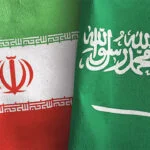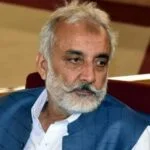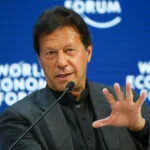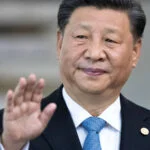The recent provocation as the UN Security Council gears up to hold an emergency session on Pyongyang’s activities comes from North Korean leader Kim Jong Un, who pledged to deploy nuclear weapons to confront threats from the United States hours after testing an ICMB.
To examine North Korea’s most recent missile launch, the United Nations Security Council will convene on Monday at the request of Japan, South Korea, and the US.
The Hwasong-17 ICBM, which North Korea claims can fly up to 15,000 kilometers (9,320 miles), was tested on Friday, not long after the country warned Washington that it would face “fiercer military reactions.”
According to Pyongyang’s official Korean Central News Agency (KCNA), “Kim Jong Un solemnly declared that if the enemies continue to pose threats … our party and government will resolutely react to nukes with nuclear weapons and to total confrontation with all-out confrontation.”
The Hwasong-17, according to KCNA, is the “strongest strategic weapon in the world” and was fired on Friday to achieve “the most powerful and absolute nuclear deterrence.”
The US military and its allies in South Korea, according to North Korea, have been posing a threat to it for many years, hence the country has long defended its use of ballistic missile launches as a valid response.
When Kim visited a missile launch site on Friday, his daughter was with him, making her first public entrance. Kim and his daughter strolled hand in hand through the ICBM launch site, being followed by military authorities and workers. They stopped to take in the military equipment and several ICBMs.
Fumio Kishida, the prime minister of Japan, said in a statement following Friday’s launch that his nation had “lodged a strong protest against North Korea, which has repeated its provocations with unprecedented frequency.”
At the summit conference of the Asia-Pacific Economic Cooperation in Thailand, Kishida stated, “We have told (Pyongyang) that we absolutely cannot tolerate such actions.”
The missile, according to KCNA, travelled about 1,000 kilometres (621 miles) in just over 69 minutes, reaching a maximum height of 6,041 km (3,754 miles).
The missile test was hailed as a success by Kim, who said it was proof of North Korea’s “maximum capacity to contain any nuclear threat” and a warning to US President Joe Biden’s government and partners that any military aggression would result in their “self-destruction,” according to KCNA.
As reported by KCNA, Kim remarked “Our party and government should demonstrate their strongest will to retaliate the hysteric aggression war drills by the enemies.”
After pressing Chinese President Xi Jinping in their first face-to-face encounter at the G20 summit in Bali to let Kim realize that Washington will not support his “long-range nuclear tests,” Friday’s ICBM launch and bellicose pronouncements immediately follow.
If Xi was unable to restrain Pyongyang, Biden threatened a “defensive” reaction to “send a clear message to North Korea.” Biden has not yet specifically addressed Friday’s ICBM test by North Korea.
“We are aware of the DPRK’s ballistic missile launch and are consulting closely with the Republic of Korea (ROK) and Japan, as well as other regional allies and partners,” the US Department of Defence stated in a report.
“The United States condemns these actions and calls on the DPRK to refrain from any further unlawful and destabilizing acts. While we have assessed that this event does not pose an immediate threat to US personnel, or territory, or to our allies, we will continue to monitor the situation. The US commitments to the defence of the ROK and Japan remain ironclad.”












